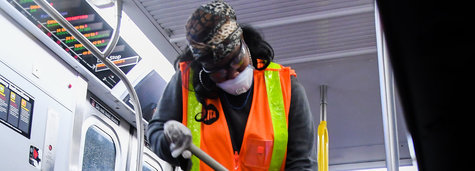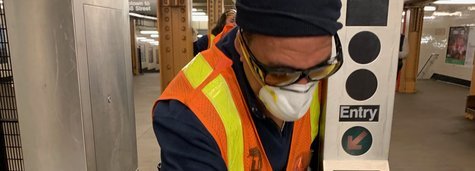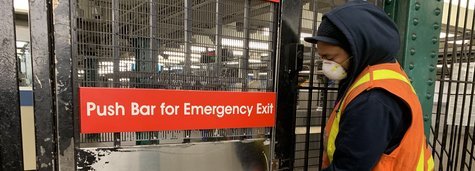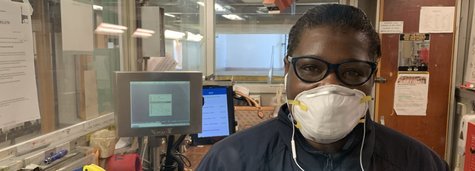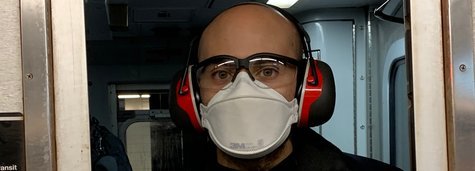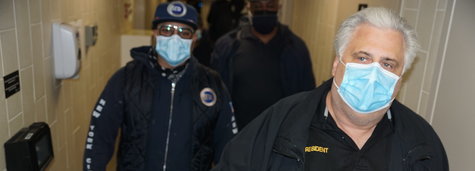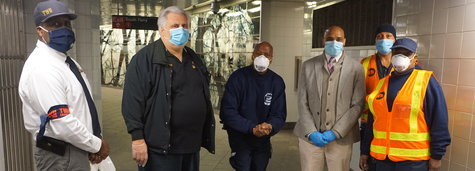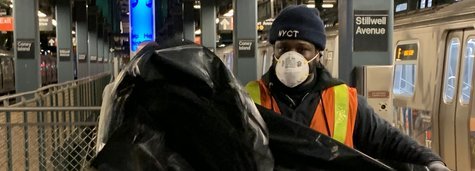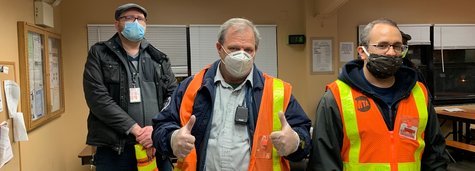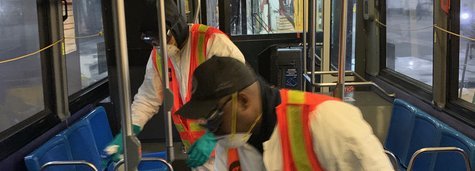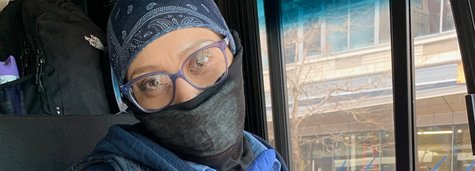The Express Train to More Dangerous Subways -- Op Ed by Pres. Utano
Amazingly, MTA management is still pushing forward with a plan to temporarily shutter subway station booths — leaving them unstaffed — for periods of time during the morning, evening and overnight shifts. How can that possibly help the situation? It won’t. Riders will be less safe and even more fearful.
On one hand, the MTA is demanding Mayor de Blasio put more uniformed police officers in the subway. We wholeheartedly agree. But on the other hand, the MTA is looking to take away uniformed station agents, who provide extra sets of eyes and ears for law enforcement. Station agents call for the police and medical assistance all the time.
Here’s a snapshot.
On Sunday, Feb. 14, station agents called for the police and/or EMTs because of these situations:
Two riders were assaulted at different stations.
Six riders fell, including three who tumbled to the tracks from a platform.
Two subway cleaners were being harassed and menaced.
A group of eight riders, including two children, were stuck in an elevator.
An unattended package was left near a station exit.
There also were some reports of vandalism, someone breaking into a utility room, and people who were injured just outside the station on the street level.
That’s just one 24-hour period.
Right now, a station agent who takes his or her 30-minute meal break is replaced temporarily in the booth for that period of time by another station agent on “lunch relief” duty. Eliminating lunch-relief duty would mean every full-time booth would be locked and unstaffed for 90 minutes a day.
There are more than 470 booths in the subway system. In essence, you are talking about a security and safety cut totaling approximately 700 hours a day, approximately 5,000 hours per week.
That’s a lot of time during which a station agent will not be in the booth monitoring turnstile areas and subway entrances.
On Feb. 3, a man commuting to work was slashed across the face on an L train at a Manhattan station in an unprovoked and brutal attack. Bleeding profusely, he went directly to the booth. “He came up and said, ‘Call the police. I have been slashed,” the station agent on duty that morning said. “He was in a state of shock.”
Last Friday, a mentally ill man with a knife began a murderous rampage on the A line. He killed two homeless people, and nearly murdered two others who survived, according to police. A rider at the Mott Ave./Far Rockaway station came across the butchered body of the first murder victim in a train car at 11:19 p.m., and “reported the grisly killing to the booth clerk,” The Daily News reported. If the MTA’s booth closure plan had been in effect, those booths could have been empty.
MTA management, which says it needs to close booths for three 30-minute periods every day to reduce labor costs, tried to implement its plan on Jan. 31. TWU Local 100 filed a lawsuit challenging the move. We argued booth closures would not only be unsafe but also would amount to a service cut: Riders would be denied services that station agents provide, which include remotely opening service gates for wheelchair users unable to navigate through turnstiles. We also argued the MTA would be violating state law requiring public hearings before it implements significant service changes.
An MTA lawyer claimed these “mere” staffing changes would only be a “minor inconvenience” to riders. Supreme Court Justice W. Franc Perry sided with the union. While he didn’t directly answer the safety question, Perry ruled on Jan. 28 that the MTA must hold public hearings if it wants to move forward. The planned “closures clearly constitute a reduction of services and a reduction of access to the system by the general public,” Perry ruled. An MTA spokesman has said the MTA plans on holding the required hearings.
The MTA faces major financial challenges because of how COVID-19 has ravaged the economy and agency revenues. But it has received billions of dollars from the federal government, and billions more are expected. It shouldn’t cut corners on safety. Reducing station staffing would be a bad idea during the best of times. It’s a horrendous and dangerous idea today.
Read the article in today's paper here


